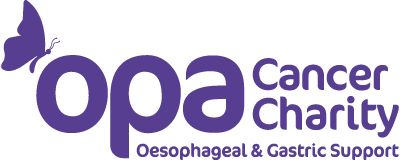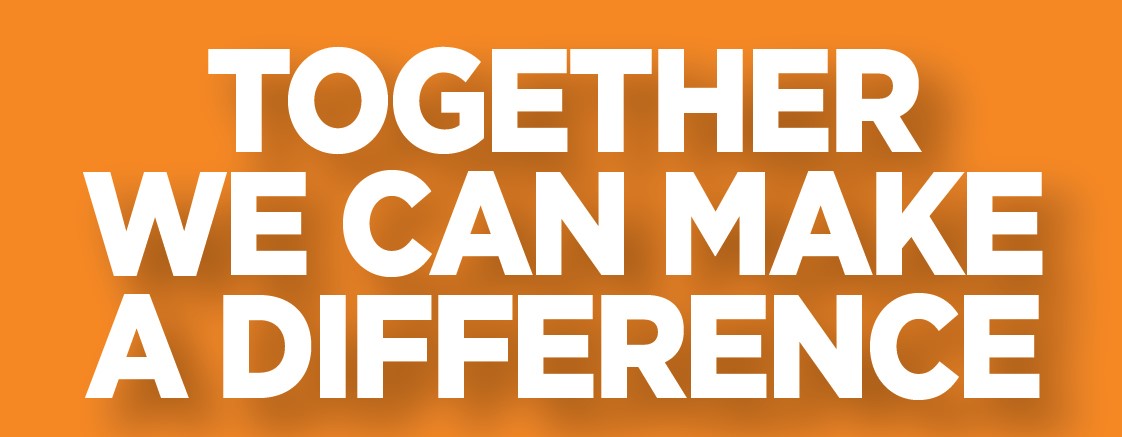David Eaves Story – a member of the OPA Leeds Branch
Click here to read David’s Story in a PDF document.
Keeping it in the Family
Can examining family history bring improvements to patient outcomes in Oesophageal Cancer treatment?
David Eaves is a member of the Leeds branch of the Oesophageal Patients Association since October 2012. Here he discusses his experiences, his work, and a topic close to his heart: whether there are hereditary factors.
I underwent my surgery in Leeds in June 2012 following diagnosis in February and treatment in April and May. Classic symptoms (difficulty swallowing, having to bring it back up, hiccups, pale appearance due to massive iron loss, fatigue) actually began in the previous October, and I knew then what they were and what it meant. Nonetheless, I didn’t want to be undergoing treatment over Christmas, because my mum was coming to visit from Stornoway where I grew up and she still lives. I managed to conceal the symptoms during Christmas dinner, which was quite an achievement. But how did I know, and why would I go to those lengths?
In August 2009, Dad died from Oesophageal cancer. Symptoms first presented earlier in the year but not knowing what it was (and being a Scottish man in his late 50s, not wanting to bother the doctors), he tried to manage the symptoms himself – cut food up smaller, chew more times before swallowing, eat more slowly, change diet. By 2006 it could not be self-managed, prompting a call to NHS24 (the Scottish equivalent of 111), an overnight hospital stay for monitoring, and tests the next day. Diagnosis was essentially immediate with a “terminal” prefix shortly after. But he stubbornly took all the treatment offered to him until two weeks before he died, when he wrote his final diary entry: “No more chemo”. The last day of my holiday back home, and the last time I saw him.
Of course, it made no difference what time of year it was when I’d tell Mum that it was my turn. It is still the single hardest thing I’ve ever had to tell anyone, and because she was 500 miles away it had to be over the phone. A lot less than ideal.
Thoughts invariably turned to what caused it. Random bad luck? Chernobyl, since the fall-out in 1986 affected the North West of Scotland? Lifestyle? Hereditary? I asked at clinic and it was thought then that no, it wasn’t. My tumour was right at the oesophago-gastric junction and Dad’s was further up, and if it was hereditary it might have been expected to have been closer.
Since my involvement in the OPA, though, I’ve come across many more people who have relatives who have been affected. A retired magistrate in London whose father sadly succumbed many years ago, who himself has had successful surgery in the recent past and whose son was at that time facing treatment; a lady from Lincoln whose mother had been ill and whose daughter was suffering from Barrett’s; and word just a few hours before beginning to write this of a recent patient in North Yorkshire whose brother was facing surgery too. Are we the unlucky families? My father’s uncle died long before I was born. In those days cancer wasn’t as openly discussed as now. Was that cancer and what kind was it? My brother was recommended by a GP friend of mine to have a preemptive endoscopy. He hasn’t, but his GP knows that if he feels one is needed it will be prioritised. We know that for many cancers there are known and definitive familial links, including breast, ovarian and stomach cancers. Is it the same for oesophageal cancer, so closely related as it is to stomach cancer?
Statistically we have less-than-fantastic survival rates. If you’re a patient who’s survived surgery and are still going through the mill learning how your new “you” copes with what used to be the most simple of things, you are one of the extremely lucky and successful ones, even if it doesn’t feel like it. I know this, all too well, but it isn’t always easy to believe.
Because of these survival rates and the poor detection rates for oesophageal cancer, especially historically, there might not be as much information that would help or have helped those of us who have had family members go through this before us. If data were collected when our mothers or fathers or aunties or uncles were diagnosed, it might not be that vast or of good quality. I don’t think there’s ever been enough of us to be studied. But the data are there now and both quality and quantity have been improving year on year. If a study is done and a familial link found, our sons and daughters, nieces and nephews should be able to benefit from earlier intervention.
Every visit to an NHS or NHS-funded service results in vast amounts of data that are collected and collated by NHS Digital1 , the part of the NHS where I now work. The data are used for many reports and statistics, never attempting or needing to know who any of the individuals are. But research organisations and charities and other organisations can apply to have data sent to them for specifically agreed purposes and under strict conditions, including length of time the data may be used and stored. Under certain very restricted conditions, where individuals in studies have consented and where they have not otherwise requested their data remain inside the NHS2 , data for these patients can be sent encoded in such a way to allow these organisations (and only those individual organisations for those specific purposes) to identify those patients (and only those patients). Hospital data, in-patient, out-patient, emergency care, maternity care, mental health data, prescribing data, births data, mortality data, a patient’s entire journey through the NHS, and only ever those who absolutely need to know, and are legally permitted, being able to determine who those people actually are. The possibilities are vast.
One important use of these data, and most relevant to us, is Clinical Audit. Every year CARMS, the Clinical Audit and Registries Management Service in NHS Digital, collects and collates data from many sources for audits for many different areas: the National Diabetes Audit, the National Bowel Cancer Audit, Pulmonary Hypertension, Out-of-Area mental health Placements, and of course the National Oesophago-gastric Cancers Audit (NOGCA). Because of the similarities of stomach cancer and oesophageal cancer and their treatment regimes, these two are studied together.
NOGCA collects data from all patients diagnosed with OG cancer and links it to other data, such as mortality and chemotherapy data. This rich data source is analysed and report published each year. Over time, this audit has led to improved practices at hospitals where cancer treatment takes place: centralisation of cancer services was supported by audit findings; standardising of treatment plans; two or three rounds of Chemo- or chemo-radio-therapy prior to surgery; all supported and driven by clinical audits, improving patient outcomes.
1 in full compliance with all laws and guidelines; primarily for patient care but also for payments, costings and performance 2 Patient Objections. For more information, please see http://nhs.uk/your-nhs-data-matters
The latest annual report was published recently and is available, along with previous reports and other resources, on the NOGCA website3 . Some key findings include:
- There is a need to investigate how to improve early diagnosis and investigate the reasons for high rates of diagnosis after emergency admission.4
- There is still a need to improve times between referral and treatment5
- CT scans have increased, as have PET scans as EUSs have decreased, though with some regional variation6
- There are regional differences when comparing the number of patients with a curative treatment plan and those who have surgical records, and with the rates of palliative patients receiving the best supportive care7
- More patients, where suitable, should receive chemoradiotherapy rather than just chemotherapy before surgery. Other countries’ studies have shown this to have some benefit. A study is ongoing in the UK 8
- There is still a high standard of surgical care in England and Wales9 although with a rare increase in 90-day mortality in one area.10
By examining previous reports and data it’s possible to see how the improvements in practice recommended by these audits are improving patient outcomes; for example:
- [Comparable statistics from previous audits]
These reports are, of course, generally aimed at the clinical community and for nearly everyone reading this (apologies for the sweeping assumptions) they will be difficult to understand. The charts are also unhelpful if you don’t understand the specific data behind it and what they mean, so please don’t start looking at them and start panicking.
A welcome innovation for the 2017 report was input from patients and a dedicated patient-focused supplement. This report is available on the NOGCA website. The latest at the time of writing is still the 2017 one; the 2018 patient report is not yet complete but will be released in due course. The OPA are developing stronger links with the audit and hope to be able to influence additional areas to study through increased patient experience feedback. You can begin to take part now by discussing this in your regional meetings and emailing OPA.AuditFeedback@icloud.com. CARMS have indicated they’d be willing to talk to other regional meetings about the audit, and I would be happy to discuss how we as patients can help.
Links
NOGCA main website [https://www.nogca.org.uk/] NOGCA 2018 Audit Report [https://www.nogca.org.uk/reports/2018-annual-report/] NOGCA 2017 Audit Report [https://www.nogca.org.uk/reports/2017-annual-report/] NOGCA 2017 Patient Report [https://www.nogca.org.uk/reports/2017-patient-report/]


